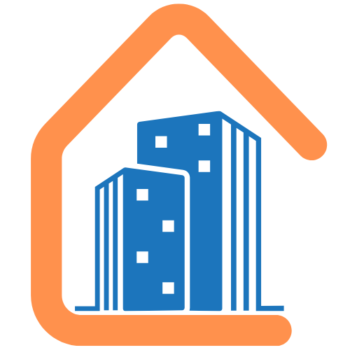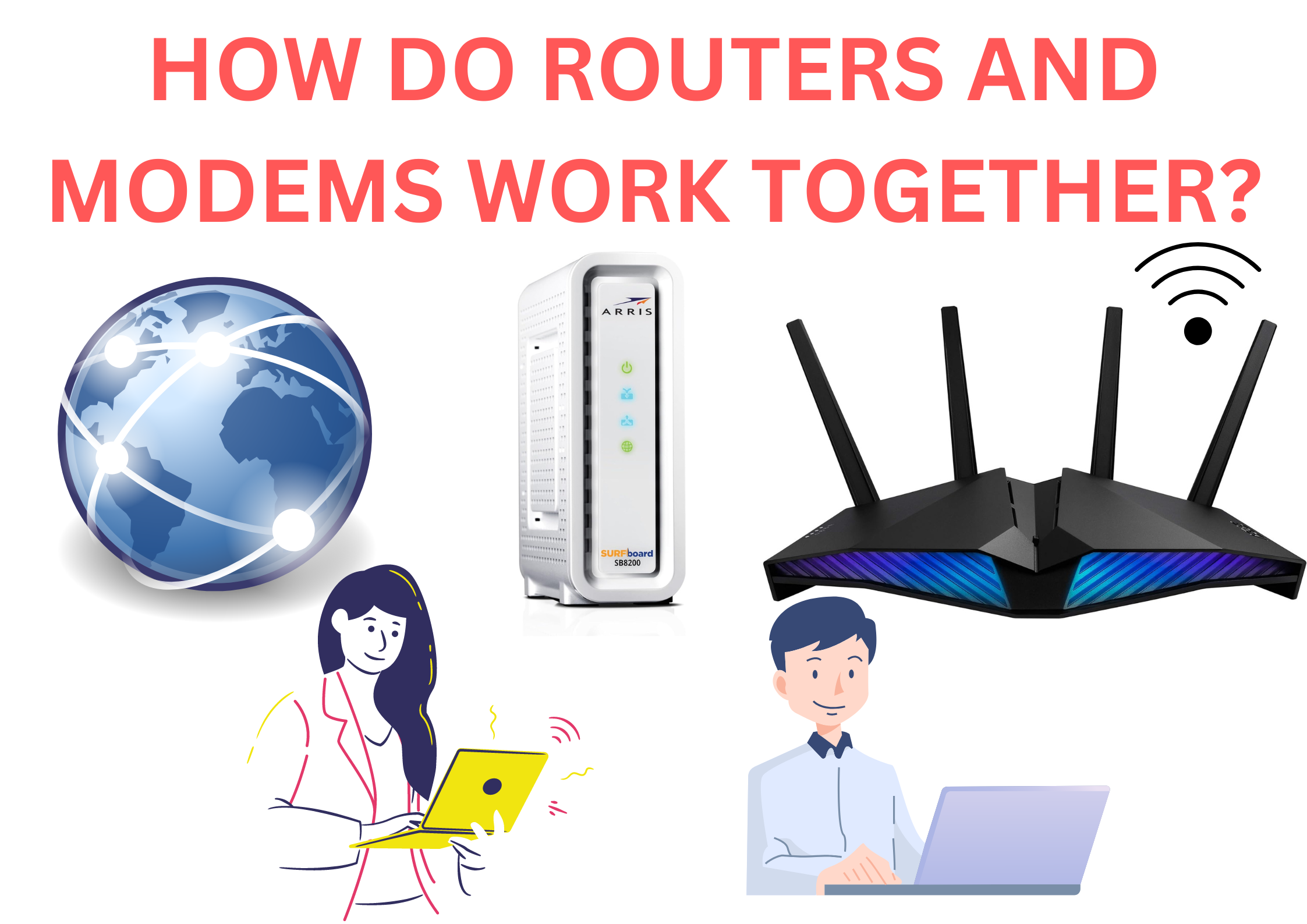The definition of a router, how it differs from a modem, and how it connects you to the internet are all covered in this article. This article explains “How Do Routers and Modems Work Together?”.
What Is a Modem?
A modem, also known as a “modulator-demodulator,” is a device that uses a physical connection to link your home to your internet service provider (ISP). This device converts analog to digital signals and vice versa. Analog data is transmitted over phone or cable lines; however, your computer can only process digital data. That translation is made by the modem.
Your ISP’s data is converted by the modem into a format that is compatible with the devices on your home network. Using modulation and demodulation, a modem converts digital data from your computer into analog signals that can be transmitted over wires and vice versa. These signals can be sent through coaxial cables, phone lines, etc.
What Is a Router?
A router is a device that establishes a local area network (LANIt serves as a link between your modem and computer. Your devices, including laptops, tablets, smartphones, and PCs, are connected to the modem via your router.
The router makes it possible for several computers to connect to the same modem, giving them access to the Internet. Every device on your home network is linked by the router and is able to communicate with one another. This facilitates the devices’ ability to establish an internet connection. ). A router can have a WAN port in addition to a LAN port.
How Do Routers and Modems Work Together?
- The modem sends and receives signals from the ISP whereas the router distributes the signal to all of the network’s devices. In a typical home network configuration, all of the devices on the network are connected to the router, which is connected to the modem.
- For a connection to be dependable and stable, the modem and router are necessary. Networked devices couldn’t communicate with one another without a router, and the router couldn’t connect to the internet without a modem.
- You can access a local network by connecting to a router, but you cannot access the Internet through this. To access the Internet, your router must be linked to a modem.
- Your computer’s digital signals are converted by the modem into analog signals that can be transmitted over the wires and cables.
- A data packet sent from your computer to the Internet first passes through your router. Your modem receives the packet from your router and connects it to your ISP, acting as a dependable traffic controller. Thus, a data packet travels from a computer via a router, modem, Internet service provider, and Internet.
Communication Protocol Between Modem and Router
Our modems allow us to establish a connection with an Internet service provider (ISP), which then grants us access to the Internet. Via the Internet, we can establish a connection with any virtual machine or computers or laptops worldwide.
TCP/IP packets are being routed by your modem between you and your ISP. The standard method that is used to route these packets through your modem is known as Point-to-Point Protocol (PPP). It is the point-to-point access protocol that is most frequently used. The PPP protocol will be used if the user wishes to access the internet from their home.
Some main features of PPP are:
- It describes the frames that are used for transmission.
- It outlines the procedure for creating a link. The PPP protocol handles “how this link is established” when a user creates a link with a server.
- It outlines the procedure for exchanging data, including how and at what rate it will happen.
- Encapsulation is the key characteristic of the PPP protocol. It specifies how payload data and network layer data are contained within a data link frame.
- It outlines how the two devices authenticate to each other. The PPP protocol determines the two devices’ authentication procedures, handshaking arrangements, and password exchange mechanisms.
Wireless Networking and Its Role in Modern Networking
The ability to connect devices, communicate wirelessly, and access the internet has made wireless networks an essential part of our everyday lives. The way we stay connected has been completely transformed by wireless technology, from the ease of Wi-Fi in our homes to the installation of wireless networks in many industries.
A wireless network is a computer network that uses a wireless connection rather than a physically wired connection. They provide a versatile means of communication between devices, allowing for seamless connectivity in the absence of physical cables.
Wireless networks use radio waves to transfer data between devices via routers, giving us wireless communication, file sharing, and internet access.
Some advantages of wireless networking are:
- Enhanced Mobility: Wireless networks give mobile users access to real-time data, enabling them to move around your business’s premises without losing connection to the network.
- Accessibility: To enable communication among all members of your team, provide network access throughout your organization, including to locations that have proven difficult to access through a wired network.
- Fast and Easy Installation: By eliminating the need for cables, which can be difficult to set up and dangerous if workers trip over them, wireless network systems can be installed more quickly and easily. In addition, compared to a traditional network, it can be installed quickly and simply.
- Expansion: Easily expand your network by adding more users and locations without running cables or wires.
- Enhanced Network Coverage: Wireless networks can reach areas within your company that wires and cables cannot reach.
- Decreased Total Expense over Time: Although wireless networking may require a somewhat larger initial outlay, over time, the costs are generally less.
- Longer lifespan: In comparison to a conventionally connected network, it might also have a longer lifespan.
Quality of Service (QoS)
The term QoS (Quality of Service) describes the technology that controls the flow of data traffic across a network. Quality of Service (QoS) monitors and controls network resources in order to minimize interference such as packet loss, jitter, and latency. Additionally, QoS establishes boundaries and relative importance for various types of data that are transferred across IP networks as bandwidth traffic.
Importance of QoS
- To ensure the high performance of vital applications that need a lot of bandwidth for real-time traffic, quality of service (QoS) is especially crucial. For instance, it assists companies in giving priority to the performance of “inelastic” applications, like VoIP and videoconferencing, which frequently have low latency requirements, maximum bandwidth constraints, and high jitter and latency sensitivity.
- By preventing these sensitive applications from lagging and guaranteeing that they operate at the level that users need.
- The importance of Quality of Service (QoS) is growing as network performance requirements change to accommodate the increasing number of users. Users expect constant high performance from their online applications and services, which demand enormous amounts of bandwidth and network performance.
- QoS is becoming more and more significant along with the Internet of Things (IoT) continued development.
Conclusion
A modem and a router serve different (but complementary) purposes when it comes to connecting your devices to the internet. The device that links your internet service provider, or ISP, to your home network is called a modem. A router is a device that connects your wired and wireless devices to the internet simultaneously and enables direct communication between them. To operate a home network both devices are equally important.
FAQS
- Is it better to have a modem and router together or separate?
A modem router combo is a good option if affordability and ease of use are your top priorities. However, think about purchasing separate modem and router units if you want greater performance, flexibility, and control. Greater flexibility and customization of network settings are possible with separate modem and router units because you can customize each to meet different needs. More security will be provided than a modem/router combo can provide. In the end, the choice is based on your own requirements and preferences.
- How should my modem and router be connected?
Connect one end of an Ethernet cable to the modem’s LAN port that is at the back of the modem, and the other end to the router’s Wide Area Network (WAN) port. Turn on the router and make sure it is plugged in. To modify configurations, go to the router’s web interface (typically through a web browser) and enter the Wi-Fi name, password, and security.
Also Read
- Do Routers Have to Be Compatible with Modems? A Complete Guide 2025
- Can I Use Wi-Fi Router as Extender? A Complete Guide for You
- Can A Router and Modem Be Combined? Here’s What You Need to Know 2025
- Modem Router Combo Vs Separate: Choose Wisely 2025
- WHY IS WIFI 7 SO EXPENSIVE? PRICE Vs PERFORMANCE
- Is Wi-Fi 7 faster than Ethernet? A Complete Guide 2025
- Best Cordless Vacuum for Hardwood Floors and Carpet 2025
- Best Cordless Vacuum for Car Detailing: Under $60
- Best Car Vacuum Cleaner Cordless Under $70
- Best Affordable Robot Vacuum and Mop: Under $200
- Best Self Emptying Robot Vacuum and Mop 2025
- Best Robot Vacuum for Large Home 2025
- Best Robot Vacuum and Mop 2025
- Best Mini Humidifier for Plants: Top 4
- Best Humidifier for Indoor Plants
- Best Humidifier for Allergies and Asthma 2025
- Best Evaporative Humidifier 2025
- Best Evaporative Humidifier for Large Room
- Ultrasonic Humidifier for Mushroom Growing: Top 4

